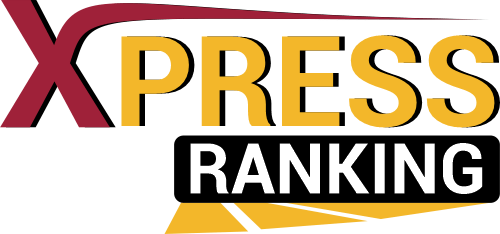Quality-rich and impactful content is a vital part of any digital marketing strategy, whether it is to reach more customers, improve your brand image, or attract the right audience. In a digital world, there are hundreds or even thousands of business websites competing with each other for the same content topic.
At the same time, creating high-quality content is a great addition to resonate with the target audience, scale your brand’s visibility, and establish a solid online presence. In this blog, we will talk about how you can improve your content reach by creating SEO-optimized content. And what strategies you should follow to convert audiences into website visitors. So, let’s start with the blog; keep on reading!
A Quick Guide to Content Optimization
Content optimization is the method of improving the quality and relevance of content to ensure it ranks well in search engine result pages (SERPs), both for readability and performance.
Optimization helps make content more relevant and appealing to the audience and makes it easy for search engines to comprehend and categorize. It is also a part of Search Engine Optimization (SEO); if the optimization goes right, it will help your page rank for more keywords, bring more website visitors, and convert them into leads.
Why Do You Need a Content Strategy?
A good content strategy starts with the audience. Before developing your content strategy, you need to understand your audience and explore their needs and preferences. At the same time, aligning your content with your goals will boost brand awareness and engagement. At the same time, practical content scale SEO increases visibility and brings more quality leads.
Furthermore, all of this eventually drives long-term business growth and improves connections with your target audience:
Know Your Audience:
Audiences are paramount when it comes to creating an impactful content strategy; all you need to do is learn more about your audience, their preferences, and how audience find your products and services.
Support Your Goals:
Building a better content strategy will help you build brand awareness and strengthen your network with the audience. This will make your audience aware of your brand, which will make them more likely to connect and engage with your products.
Better the SEO:
The inclusion of quality and impactful content for search engine optimization (SEO) is now paramount for businesses to scale the online visibility of their website or blog.
Bring you Quality Leads:
Building a content strategy can help you generate quality leads for your business, which in turn contributes to its long-term business growth.
Impactful Content Optimization to Scale Your Search Engine Ranking?

Content optimization plays a crucial role in achieving better search engine rankings and making your website visible online. Search engines prioritize web pages with highly optimized content, ranking them at the top of search engine results pages (SERPs) compared to non-optimized content.
This leads to increased organic traffic and improved search engine rankings. In digital marketing, quality, and impactful content are the cornerstone of SEO efforts, and optimizing your content is essential to appearing higher on SERPs, driving more visibility and engagement for your website.
Establish Clear, Measurable Goals
Setting measurable goals is the foundation of a successful content marketing strategies. Define specific objectives, such as boosting brand awareness, increasing traffic, or generating leads.
Furthermore, setting up such goals will guide your content creation and enable you to track progress, ensuring your efforts align with business objectives and deliver tangible results.
Define Your Target Audience
Understanding your target audience becomes paramount to crafting content that resonates. Identify their demographics, interests, and pain points. By customizing your message according to their needs, you can craft more relevant and engaging content that builds reliable connections, drives conversions, and enhances brand loyalty.
Target the Right Keywords
Targeting the right keywords is essential for effective SEO. Next, conduct thorough keyword research to find terms your audience is looking for and strategically integrate them into your content. This will improve your website’s search engine visibility and drive organic traffic.
Top of the Funnel:
The top of the funnel (TOFU) is where you can bring potential customers who are looking for your brand or business solution. This stage focuses on generating interest through educational or engaging content like blog posts, social media posts, or ads, targeting a broad audience that may not yet know your brand.
Middle of the Funnel:
The middle of the funnel (MOFU) is where potential customers evaluate your offerings. At this stage, leads are looking for more in-depth information and comparisons. Content like case studies, whitepapers, and webinars can help nurture these leads, moving them closer to making a purchasing decision.
Bottom of the Funnel:
The bottom of the funnel (BOFU) is the decision-making stage, where leads are ready to convert into customers. Content like product demos, free trials, consultations, or customer testimonials can help close the deal by addressing final concerns and reinforcing the value of your product or service.
Use Links to Boost Credibility
Integrating both internal and external links into your content enhances its credibility. SEO link building helps guide readers to relevant pages on your site, improving navigation and engagement. External links to reputable sources provide validation, strengthen your content’s authority, and improve SEO by building trust with search engines and your audience.
Research the Competition
Analyzing your competition helps you identify gaps and opportunities in your content strategy. Study their strengths and weaknesses, and leverage this insight to create unique, high-quality content marketing services that will be crucial for your brand to stand out. Understanding what works for your competitors helps you refine your approach and outperform them in search rankings and engagement.
Create a Content Style Guide
A content style guide ensures consistency in your messaging, tone, and branding across all platforms. It defines writing standards, formatting rules, and voice, creating a unified brand identity. A well-structured guide not only maintains professionalism but also streamlines content creation, ensuring a cohesive experience for your audience.
Structure Content for Better Readability
Well-structured content is crucial to keeping readers engaged. Use meaningful headings, bullet points, and short paragraphs to make your content more accessible for your audience to read. Break complex ideas into digestible chunks, making your content easy to navigate and understand. This will improve user experience and keep your audience interested in your content.
Maintain a Content Calendar
An organized content calendar helps you stay organized and consistent in publishing. Plan topics, set deadlines, and schedule posts to maintain a steady flow of content. This ensures your audience regularly receives valuable information, builds anticipation, and strengthens engagement, ultimately improving your overall content strategy and achieving your marketing goals.
Use “People Also Ask”
In Google search results, you may have seen a separate section of random questions. This section lists the most frequently asked questions from audiences. This will shake things up for your business by giving you valuable responses to what your audience is actually searching for.
Optimize Image Content
Images play a crucial role in improving accessibility, attractiveness, and user engagement. It’s not just about written content—well-optimized images, videos, and multimedia can significantly boost your website’s appeal. Incorporating high-quality visuals improves user experience, increases engagement, and keeps readers on your site longer, ultimately improving retention and overall interaction.
Bottom Line
Whether you’re a startup or a large enterprise, quality content, and SEO are essential for better rankings. Benefits include improved search engine visibility, increased traffic, enhanced user experience, and more leads. However, this requires a deep understanding of your audience’s needs and intent and smart keyword research.
To stand out, you must create high-quality content that answers your audience’s questions better than your competitors. While content optimization improves your brand’s ranking, a comprehensive SEO strategy with attention to all aspects is crucial for long-term success



